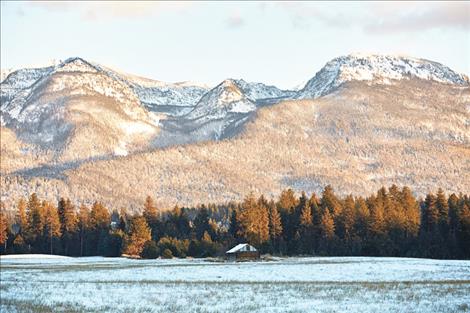Climatologists, CSKT address local climate realities
Hey savvy news reader! Thanks for choosing local.
You are now reading
2 of 3 free articles.
FLATHEAD RESERVATION — Climate extremes in Montana and possible solutions were the topics of a statewide webinar hosted by the League of Women Voters on Nov. 16.
Speakers included State Climatologist, Kelsey Jensco, Department Head for Historic Preservation for the CSKT, Mike Durglo Jr., and Gwen Lankford of the CSKT Climate Change Advisory Committee. Attendees talked through the local realities of climate change.
Jensco opened things up with an explanation of climatology. While Montana is geographically complex, which causes some difficulty when it comes to understanding and predicting future conditions, it is also a headwater state. This means the land area drains from Montana to the Missouri River Basin, the Columbia River Basin and the South Saskatchewan River Basin, leaving Montana with a disproportionate impact on the U.S.
According to studies conducted by climatologists, Montana’s average temperature has increased by .42 degrees Fahrenheit per decade over the last 65 years, bringing the current average annual temperature to 45 degrees. In comparison, the average annual temperature in the U.S. has increased by .26 degrees per decade since 1950.
While longer periods of warmer temperatures might mean longer growing seasons, Jensco explained that it also results in an elimination of critical moisture. Warmer temperatures will result in an earlier snowmelt, resulting in snowpack storage decline by April. This can result in flash droughts brought on by warm temperatures and low rainfall in May and June, which can also lead to an increase in forest fires.
Inversely, the melting of snowpack can swing the issue in the opposite direction and cause extreme flooding. The combination of earlier melting snow, along with the movement of warm and wet air from other areas, known as “atmospheric rivers,” can cause the kind of severe flooding event that was witnessed in Yellowstone early in 2022.
All of this depends on how the state’s unique geography contributes to how much, how fast, and where these changes will occur.
The changing climate has had a notable impact on the Tribes as well, Durglo shared in his presentation. The Tribes have found cultural resources are being lost, altered, or destroyed with increasing frequency in the face of climate change.
“The fact that we are all connected, as a people - we’re connected to our land, our animals, and our resources. That is the basis of our spiritual life. It’s our whole being,” Durglo stated.
While much of the discussion centered around the consequences of increasingly severe climate extremes, ways to move forward in a positive direction were also discussed.
Durglo shared that the Tribe has been acting on the Tribal Council Resolution, “CSKT Strategic Climate Plan,” first developed back in 2012, to battle climate change, including biocultural restoration efforts and youth education to restore not only ecosystems but also the human and cultural relationships to the land. One way they have implemented their plan is to replant the valuable resource of whitebark pines by cultivating a nursery of 30,000 whitebark pines. They are also including the next generation in restoration projects with youth educational programs to pass on traditional knowledge about whitebark pine forests and ecosystems.
“Those little baby whitebark pines that they planted last year … we won’t see them grow to maturity … it takes 60 to 70 years before those little babies will start producing,” Durglo said. “It’s about what we do for the future, and how we protect future generations.”
Still, Durglo stressed that collaborations are needed to care for the land on a larger scale than just within the Reservation boundaries. To that end, Lankford spoke about focus on connection and collaborative efforts and reciprocity as the way forward.
“(Vertical integration) is very, very vulnerable to consolidation of power, consolidation of greed, consolidation of resources, that makes the entire (population) vulnerable,” Lankford explained. “In a horizontal integration, if we were to say that all of us were a point on the circle, we would all offer our gifts to that circle to make it stronger … To have a determination and a real investment in that space that brings truly collaborative partnerships to the table is critical.”
Jensco also shared that climatologists throughout the state are working on a collaborative framework of stations called “Montana Mesonet” through federal, state, and private partnerships. This paired with expansion and improvements to climate infrastructure will provide more accurate monitoring allowing officials to make informed responses and adaptation measures to weather extremes, as well as potentially lead to policy changes.
“We’re all in this boat together and we all have to do our part and paddle the boat,” Durglo stated.
To learn more about the CSKT Strategic Climate Plan, visit: http://csktclimate.org/
To learn about the Montana Mesonet project, visit: http://climate.umt.edu/mesonet/
















